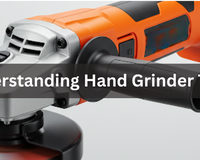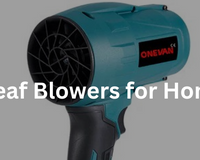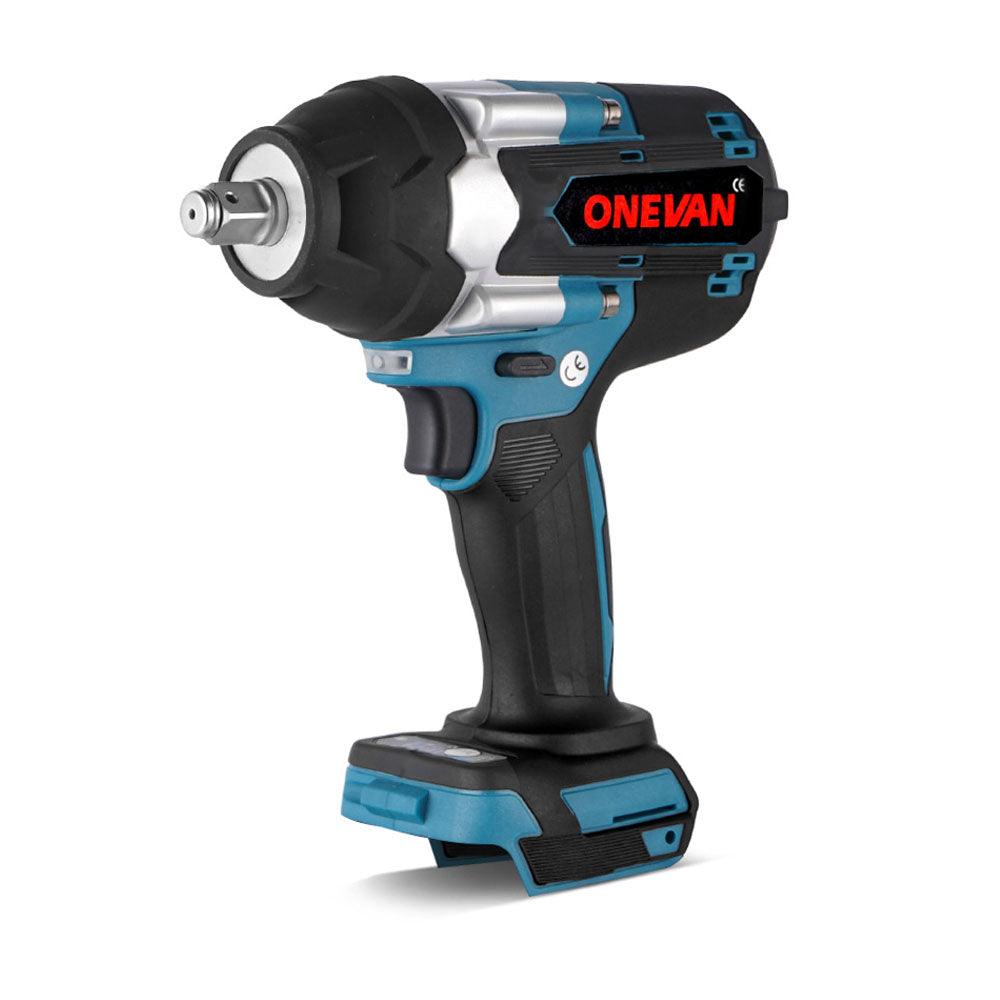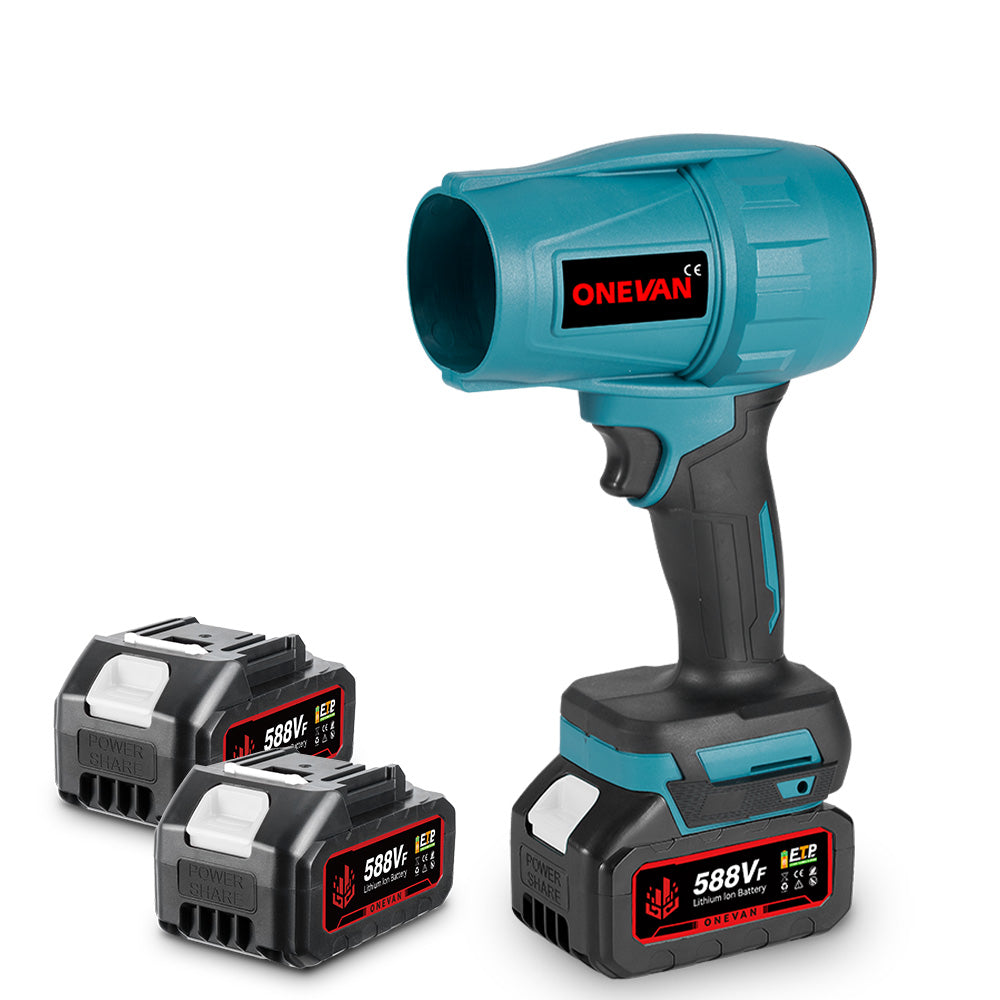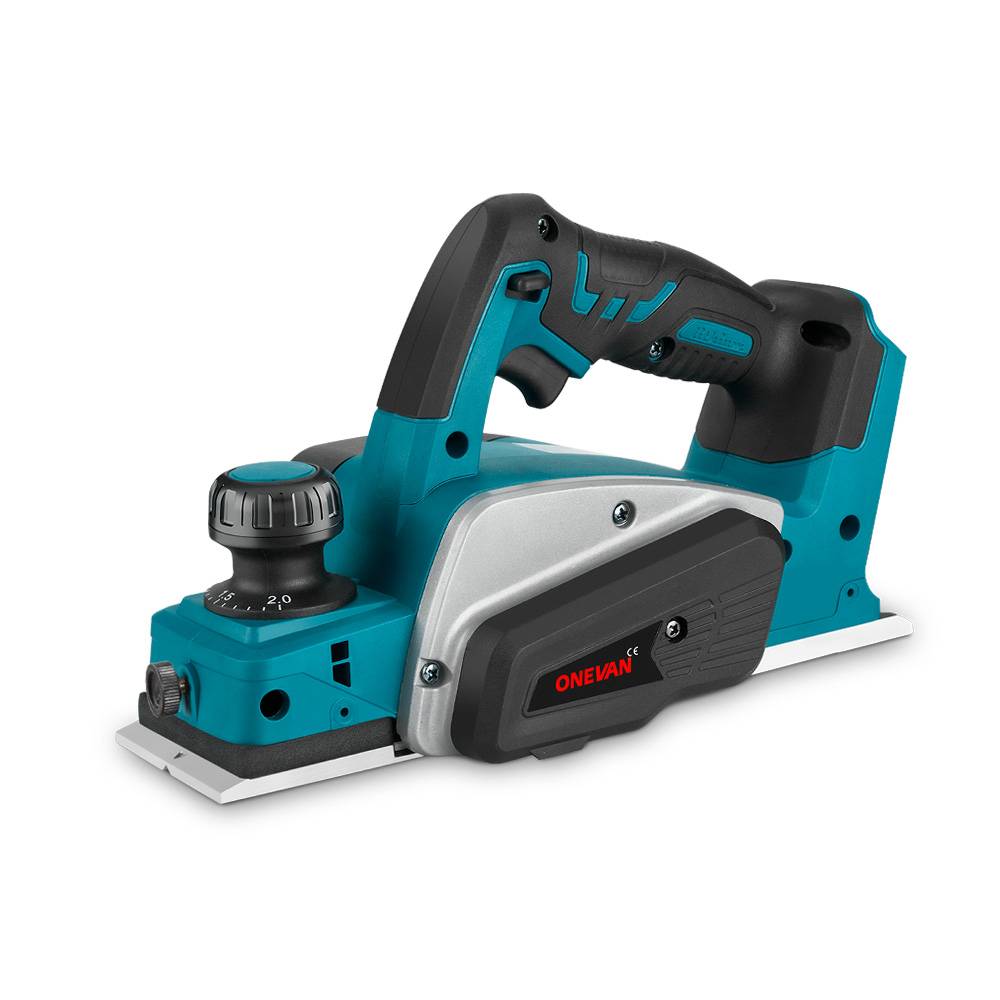Mesmo com as novas tecnologias, construir um soprador de folhas silencioso é realmente difícil. Motores potentes são necessários para movimentar grandes volumes de ar, o que resulta em ruído significativo.
Mas também tem um lado bom! Os sopradores de folhas sem fio estão ficando mais silenciosos. Eles têm designs especiais e novas tecnologias para ajudar a reduzir o ruído.
Vamos analisar mais de perto por que é difícil fabricar um soprador de folhas silencioso e como os engenheiros estão tentando resolver o problema.
1. Compreendendo as fontes e o impacto do ruído do soprador de folhas

Os sopradores de folhas são notórios por seu alto nível de ruído. É um dos principais causadores da poluição sonora em áreas residenciais. Conforme destacado em "A guerra contra sopradores de folhas a gás está se intensificando em Nova Jersey" (Martin, 2023), esse ruído se tornou um ponto de discórdia significativo, o que levou ao aumento da demanda por alternativas mais silenciosas. Abaixo, você encontrará diferentes fontes que contribuem para esse ruído:
Fontes de ruído em sopradores de folhas
Ruído do Motor: O motor é a principal fonte de ruído. Em sopradores a gás, o motor de dois tempos produz um ruído alto e agudo. Até mesmo motores elétricos geram ruído, embora normalmente menos intenso do que os a gás. Quanto mais rápido o motor gira, mais ruído ele geralmente produz. Isso está em linha com os princípios básicos da geração de ruído, onde maior energia e movimentos mais rápidos frequentemente resultam em maior intensidade sonora (Departamento de Química da Universidade Purdue, 2000).
Ruído gerado pelo movimento de ar em alta velocidade: Os sopradores de folhas funcionam empurrando o ar em velocidades extremamente altas. Esse movimento rápido do ar cria turbulência e flutuações de pressão, gerando uma parcela significativa do ruído. O design do ventilador, do bico e da carcaça ao redor influencia a intensidade e a natureza desse ruído.
Vibrações Mecânicas: As vibrações ocorrem durante o funcionamento do motor, do ventilador e das engrenagens, transferindo movimento por todo o soprador. Transferidas do corpo do soprador, elas se irradiam como som. Essas vibrações podem ser agravadas por peças mal instaladas ou componentes desgastados, que aumentam o ruído.
Ruído Ambiental e Contextual: O ambiente desempenha um papel na forma como percebemos o ruído de um soprador de folhas. Superfícies duras, como paredes e calçadas, refletem as ondas sonoras, amplificando o ruído. Superfícies macias, como grama e árvores, absorvem o som. Elas reduzem sua intensidade. Em outras palavras, se você tiver um soprador de folhas em um ambiente urbano denso, ele emitirá um som mais alto em comparação com seu concorrente operando em ambientes abertos.
Ambientes urbanos: O ruído reverbera em edifícios e superfícies rígidas. Ele aumenta a percepção de volume. Em ambientes urbanos, o efeito "canyon urbano" pode aprisionar e amplificar o som entre os edifícios. Isso o torna mais alto e persistente. Esse fenômeno, conhecido como "efeito canyon urbano", é bem documentado em estudos sobre poluição sonora urbana.
Ambientes rurais: espaços mais abertos e superfícies de solo mais macias absorvem ondas sonoras, resultando em menores níveis de ruído percebido.
2. Análise comparativa de diferentes tipos de sopradores de folhas

Você precisa entender os prós e os contras de cada tipo de soprador de folhas. Aqui, você encontrará uma comparação detalhada entre modelos a gás e elétricos com fio:
Sopradores de folhas movidos a gás
Níveis de ruído
Sopradores de folhas a gasolina são notórios por seus altos níveis de ruído. Geralmente, esses modelos geram entre 65 e 85 decibéis (dB) . Isso pode exceder os limites de segurança para exposição ao ruído e contribuir significativamente para a poluição sonora. Alguns modelos potentes podem atingir até mais de 100 dB , comparável ao ruído de uma motocicleta ou britadeira.
Desempenho e Eficiência
Os sopradores a gás são conhecidos por sua alta potência e força de sopro . Isso os torna eficazes para limpar grandes áreas e lidar com detritos pesados, como folhas molhadas ou pequenos galhos. No entanto, essa potência tem o custo de um aumento no ruído.
Compensações entre potência e ruído:
- Maior potência geralmente significa um motor mais barulhento e ruído de ar mais intenso.
- Alguns fabricantes oferecem modelos a gás "de baixo ruído", mas estes muitas vezes sacrificam parte da potência para reduzir a saída de ruído.
Impacto Ambiental
Sopradores de folhas movidos a gás emitem gases de escape contendo monóxido de carbono e hidrocarbonetos, que impactam negativamente a qualidade do ar e a saúde pública.
Sopradores de folhas movidos a gás Impacto da poluição sonora em ambientes urbanos:
Ruídos altos são um grande problema em áreas densamente povoadas. A poluição sonora pode impactar significativamente as pessoas. Por exemplo, elas podem ficar estressadas, perder o sono e machucar os ouvidos. Devido a esses problemas, as pessoas estão optando por sopradores de folhas sem fio.
Sopradores de folhas elétricos com fio
Níveis de ruído
Sopradores elétricos com fio geram menos ruído em comparação aos modelos a gás. Normalmente, eles produzem níveis de ruído na faixa de 60 a 75 dB . Embora ainda perceptível, isso representa uma redução significativa em comparação aos sopradores a gás.
Desempenho e Eficiência
Sopradores elétricos oferecem potência consistente e são geralmente mais leves e fáceis de manusear do que os modelos a gás. No entanto, podem ter menor força de sopro em comparação com os sopradores a gás mais potentes.
Compensações entre potência e ruído:
- Sopradores elétricos com fio oferecem um bom equilíbrio entre potência e redução de ruído.
- Embora não sejam tão potentes quanto alguns modelos a gasolina, eles são suficientes para a maioria dos trabalhos em jardins residenciais.
Impacto Ambiental
Sopradores elétricos com fio não emitem gases. Essa qualidade os torna uma alternativa mais limpa aos sopradores a gás. No entanto, se a eletricidade for produzida a partir de combustíveis fósseis, ela pode ser prejudicial.
Sopradores de folhas elétricos com fio Impacto da poluição sonora em ambientes urbanos:
- Os níveis reduzidos de ruído dos sopradores elétricos com fio contribuem menos para a poluição sonora em áreas urbanas.
- Eles oferecem uma opção mais ecológica para ambientes sensíveis ao ruído.
Sopradores de folhas elétricos sem fio
Sopradores elétricos sem fio estão dominando o mercado. Eles geram baixíssimo ruído e podem ser transportados para qualquer lugar sem esforço. Por exemplo, todos os sopradores de folhas da ONEVAN são sem fio. Se tiver interesse, você pode saber mais sobre eles.
Níveis de ruído
Os sopradores sem fio são menos barulhentos em comparação com os movidos a gás, geralmente produzindo níveis de ruído entre 60 e 75 dB. Isso os torna mais adequados para instalação em áreas sensíveis ao ruído.
Desempenho e Eficiência
As baterias registraram uma grande melhoria em termos de potência e desempenho em sopradores sem fio . Dependendo do tamanho e do modelo, elas podem oferecer o mesmo desempenho que os modelos elétricos com fio e até mesmo alguns sopradores a gás, quando usados em aplicações domésticas comuns.
Compensações entre potência e ruído:
- Sopradores sem fio de maior potência podem gerar um pouco mais de ruído do que seus equivalentes de menor potência, mas ainda produzem significativamente menos ruído do que os modelos a gás.
- O tempo de execução pode ser uma consideração, mas baterias mais novas oferecem maior tempo de operação.
Impacto Ambiental
Sopradores sem fio produzem zero emissões. Eles contribuem significativamente para uma qualidade de ar mais limpa. Comparados aos sopradores de folhas a gás, os sopradores sem fio não produzem fumaça prejudicial ao meio ambiente.
Sopradores de folhas elétricos sem fio Impacto da poluição sonora em ambientes urbanos:
- Seus níveis de ruído reduzidos os tornam uma escolha mais atenciosa para áreas urbanas, minimizando a perturbação sonora para os moradores.
- Eles oferecem uma alternativa mais verde para municípios e indivíduos que buscam reduzir sua pegada ambiental.
Níveis de ruído comparativos: a gás, com fio e sem fio
Aqui está uma rápida comparação dos níveis de ruído típicos para os três tipos de sopradores de folhas:
- Alimentado a gás: 65-85 dB (pode exceder 100 dB)
- Elétrico com fio: 60-75 dB
- Elétrica sem fio: 60-75 dB
3. Avanços tecnológicos modernos na redução de ruído
Tornar sopradores de folhas mais silenciosos é uma tarefa árdua para os engenheiros. Eles precisam encontrar maneiras de interromper o ruído na fonte e impedir que ele se espalhe. A tecnologia está ajudando a tornar isso possível. Sopradores mais silenciosos significam menos poluição sonora e vizinhos mais felizes. Todos se beneficiam desses avanços.
Inovações em Design de Motores
Motores sem escovas
Os motores sem escovas são uma inovação moderna, superando os motores com escovas tradicionais. São mais eficientes, produzem menos ruído e têm uma vida útil mais longa devido à ausência de escovas que causam atrito. Veja por que eles são melhores:
- Menos desgaste: isso significa que eles funcionam de forma mais silenciosa e duram mais.
- Economize energia: eles usam menos energia e fazem as baterias durarem mais.
- O controle eletrônico permite operação otimizada e maior redução de ruído.
Impacto na redução de ruído:
Motores sem escovas são mais silenciosos. Não possuem peças que se esfregam. Isso significa menos ruído e vibração. Eles também duram mais e exigem menos manutenção. Isso ocorre porque não há escovas que se desgastem.
O Secador de Cabelo de Jardim Sem Fio de Alta Pressão ONEVAN é uma ferramenta potente. Possui uma potência máxima de 4500 W. Ele movimenta muito ar, até 8,8 m³ por minuto. Isso permite uma rápida remoção de detritos. O soprador possui uma alta velocidade de vento de 150 m/s. Ele pode mover folhas e outros detritos com facilidade. Você pode controlar a velocidade do soprador. Ela varia de 0 a 46000 rpm. Há seis modos diferentes para escolher. Isso lhe dá flexibilidade para diferentes tarefas. O soprador utiliza um motor especial de cobre. Este motor consome menos energia e dura mais. Ele também possui tecnologia de turbocompressão.
Melhorias aerodinâmicas:
Otimização do fluxo de ar
Engenheiros estão empregando técnicas avançadas para otimizar o fluxo de ar em sopradores de folhas, reduzindo a turbulência e o ruído. Isso envolve um projeto meticuloso do ventilador, da carcaça e do bico.
Dinâmica de Fluidos Computacional (CFD)
O que é CFD?
CFD significa Dinâmica de Fluidos Computacional. Ela utiliza softwares avançados para estudar o movimento do ar.
Como funciona?
Engenheiros criam um modelo digital do soprador de folhas. Eles inserem diferentes condições, como velocidade e ângulo. O objetivo é observar como o ar flui ao redor dele.
Em que isso ajuda?
O CFD ajuda engenheiros a visualizar padrões de fluxo de ar. Eles conseguem identificar onde ocorre a turbulência. Ela acontece quando o ar se move de forma caótica.
Por que isso é importante?
Os engenheiros podem alterar o design. Isso resulta em um fluxo de ar mais suave. Também reduz o ruído e melhora o desempenho.
Teste em túnel de vento
O que é teste em túnel de vento?
O teste em túnel de vento envolve colocar um modelo físico do soprador de folhas em um ambiente controlado onde o ar é soprado sobre ele.
Como funciona?
Os engenheiros observam como o ar interage com o modelo. Eles podem medir fatores como velocidade, pressão e turbulência.
Em que isso ajuda?
Este teste valida os resultados das simulações CFD. Ele mostra se o projeto funciona conforme o esperado em condições reais.
Por que isso é importante?
Os testes em túnel de vento permitem que os engenheiros refinem o projeto. Eles podem fazer ajustes para melhorar o desempenho aerodinâmico antes do produto ser lançado no mercado.
Impacto na redução de ruído:
- A turbulência reduzida minimiza o ruído gerado pelo movimento caótico do ar.
- O fluxo de ar otimizado contribui para uma experiência de sopro mais consistente e silenciosa.
Projetos de bicos redutores de ruído
O bico é a parte central que molda o som de um soprador de folhas. Os designs de bicos contemporâneos incorporam recursos que manipulam o fluxo de ar para minimizar o ruído.
Exemplos de projetos de bicos redutores de ruído:
- Bordas serrilhadas: elas dividem o fluxo de ar em jatos menores, reduzindo a intensidade do ruído.
- Palhetas direcionais: direcionam o fluxo de ar com maior precisão, minimizando turbulência e ruído.
Impacto na redução de ruído:
- Bicos especializados reduzem o ruído gerado pelo movimento de ar em alta velocidade.
- Eles contribuem para um fluxo de ar mais focado e controlado, reduzindo a poluição sonora.
Tecnologias de redução de vibração
Materiais de Habitação Avançados
A escolha dos materiais para a carcaça do soprador impacta significativamente os níveis de ruído. Engenheiros estão cada vez mais utilizando materiais avançados para amortecer vibrações e reduzir a transmissão de ruído.
Exemplos de materiais avançados para habitação:
- Materiais compósitos: oferecem alta resistência e rigidez. Além disso, absorvem significativamente as vibrações.
- Componentes emborrachados: elementos de borracha estrategicamente posicionados reduzem as vibrações, impedindo que o ruído seja transferido para a carcaça.
Impacto na redução de ruído:
- Materiais avançados isolam o motor e outros componentes vibratórios, minimizando a radiação de ruído.
Sistemas de montagem do motor
O método de montagem do motor dentro da carcaça afeta os níveis de ruído. Sistemas de montagem avançados utilizam amortecedores e suportes isolantes de vibração para minimizar a transmissão de ruído.
Exemplos de técnicas avançadas de montagem:
- Suportes de borracha: Absorvem as vibrações e impedem que elas atinjam a carcaça.
- Sistemas de suspensão: isolam o motor da carcaça, reduzindo a transferência de ruído.
Impacto na redução de ruído:
- Sistemas eficazes de montagem do motor reduzem significativamente o ruído causado pelas vibrações do motor.
Projetos de Habitação com Isolamento Acústico
Alguns fabricantes incorporam materiais e designs com isolamento acústico na caixa. O objetivo é reduzir ainda mais o ruído.
Exemplos de projetos de habitações com isolamento acústico:
- Espuma de absorção sonora: ela captura e dissipa as ondas sonoras dentro do gabinete.
- Defletores estratégicos: interrompem o caminho das ondas sonoras, reduzindo sua intensidade.
Impacto na redução de ruído:
- Os projetos de invólucros com isolamento acústico contêm ruído dentro do soprador, minimizando seu impacto no meio ambiente.
4. Conclusão
Os avanços tecnológicos estão reduzindo significativamente a poluição sonora. Projetos aerodinâmicos aprimorados e materiais avançados minimizam o ruído em máquinas. Isso resulta em locais de trabalho mais silenciosos e menor impacto ambiental.
O soprador ONEVAN exemplifica esse progresso. Seu design de motor sem escovas reduz o ruído e aumenta a eficiência e a vida útil. O ONEVAN prioriza o desempenho e o conforto do usuário com uma tecnologia mais silenciosa.
5. Perguntas frequentes
1. Como projetar o soprador considerando problemas de nível de ruído?
Algumas cidades e vilas possuem até mesmo regulamentações sobre o volume de ar que pode ser utilizado com o soprador de folhas. Isso obriga os engenheiros a projetar sopradores com níveis de ruído reduzidos. Isso se dá por meio de medidas como motores sem escovas, fluxo de ar aprimorado e uso de materiais com absorção acústica natural.
2. Qual é a diferença entre desempenho e controle de ruído em sopradores?
É por isso que, muitas vezes, se você deseja um soprador de folhas mais silencioso, provavelmente também terá um menos potente. No entanto, novas tecnologias estão sendo desenvolvidas para tornar os sopradores menos barulhentos e, ao mesmo tempo, altamente potentes. Tudo isso se resume a comparar os dois fatores.
3. O que há de tão bom em um soprador de folhas mais silencioso?
Sopradores de folhas silenciosos são preferíveis ao meio ambiente. Eles produzem menos ruídos, beneficiando tanto a vida animal quanto humana. Alguns dos sopradores mais silenciosos são elétricos, o que os torna mais ecológicos do que os modelos movidos a gás.
4. Qual é a melhor maneira de diminuir o ruído de um soprador de folhas existente?
A maneira mais simples de reduzir o ruído do seu soprador de folhas é por meio de manutenção regular. Verifique regularmente se todas as peças estão seguras e em boas condições para garantir o funcionamento adequado. Você também pode tentar usá-lo em uma rotação mais baixa se tiver acesso a uma das velocidades mais baixas do seu aparelho.
5. Há algum risco à saúde com a exposição prolongada ao ruído do soprador de folhas?
A exposição prolongada a máquinas barulhentas, como sopradores de folhas, pode levar à perda auditiva. Isso também está associado ao estresse e a outras complicações de saúde. Proteção auditiva deve ser usada se você usa um soprador de folhas com frequência.



